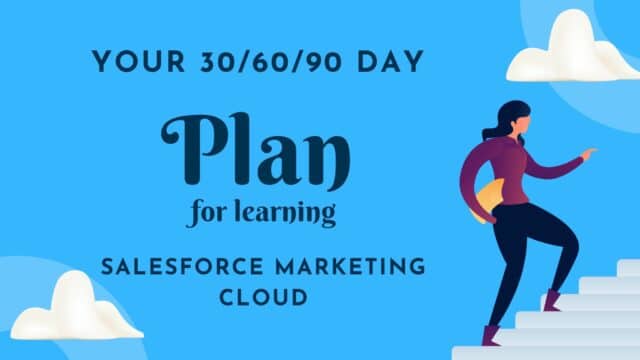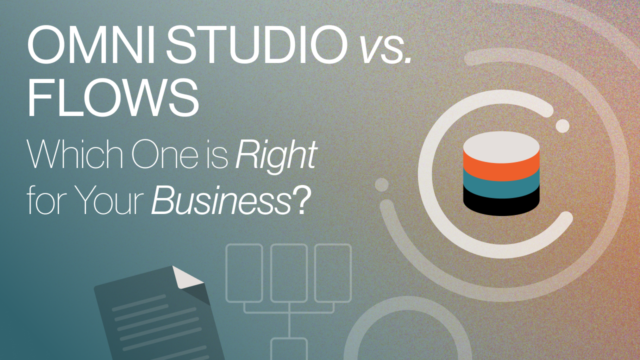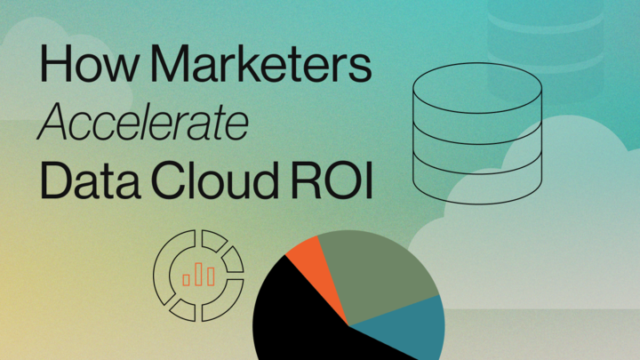Salesforce Marketing Cloud (SFMC) is one of the top platforms available to marketing automation professionals today. Thanks to its popularity, there is an abundance of online resources full of tips and tricks. BUT… with this comes a problem. Marketing Cloud newbies often don’t know where to start, how to plan their work on the platform, or which resources they can rely on.
To help with this, we want to give you a 30/60/90 day plan to get up and going on Marketing Cloud, and have included some links of our favorite (tried and true) resources.
Let’s go!
30 days
Learn the Lingo
Switching to the SFMC from another marketing automation platform (or being completely new to the Salesforce ecosystem) requires platform terminology knowledge. To give yourself a fighting chance, we recommend digging into the official SFMC Glossary.
Find reliable resources
Not sure where to go for resources? A foolproof method is to use the official documentation in any of the available formats. While Trails might be interesting for beginners due to their interactive nature (and can certainly be useful) the Help documentation is a must for configuring and troubleshooting for all professionals working with SFMC.
On top of that, the SFMC blogs and articles written by Marketing Cloud Champions and Salesforce MVPs (for example, Eliot Harper’s mc chat and Marketing Cloud Minutes) are worth their weight in gold. Even though most of them are advanced for amateurs, they provide some of the best industry tips that can be difficult to distil from simply reading the documentation.
Official Youtube channels (like this one from Salesforce Marketing Cloud) can be another excellent resource of ‘How To’ videos. These official channels also cover releases and keep you up to date on any important release notes.
Don’t Miss out on the Partner Community
It is worth getting access to the Partner Community and keeping yourself in the know. Follow Marketing Cloud groups where practitioners answer questions and share hands-on experience, and enroll in Partner Learning Camp courses. These are short courses and include quizzes that could help you to prepare for the exam down the road if there is a goal to become Marketing Cloud certified.
Learn the Legislation
Depending on the market in which your business operates, learn about how to stay compliant with CAN-SPAM, CASL or GDPR. Our Senior Marketing Automation Consultant Lauren Harrison shared her knowledge on anti-spam compliance in Canada in the blog post. This would help to understand required email elements in order to be compliant with local laws as well as be fully aware of ramifications of violating the laws.
Get the Basic Concepts of Marketing Cloud
There is a lot to learn within Marketing Cloud, and each of these topics is worthy of their own separate post. But in the interest of covering the most important points, these are the things you want to make time for in your first 30 days:
- Email Studio & Content Builder apps – Both apps support content creation. Depending on the technical skills of a user, SFMC supports both creating simple emails with drag & drop experience, emails with dynamic content built with the help of AMScript, or even advanced AMP emails (Eliot’s blog post on introduction to AMP for emails).
- Building Emails – Whether you are building simple emails, using a framework, for example MJML or building html emails from scratch like a pro, it is a best practice to learn more about all of those methods.
- Testing Emails – Marketing Cloud supports simple testing features as previews and test sends. It also supports Litmus integration (although this comes at an additional cost). Using a third-party testing tool like Litmus or Acid is welcomed and might help to thoroughly test communications on how they would render in all clients, especially Outlook Windows versions.
- SFMC apps – The most used ones are Email Studio, Journey Builder, Automation Studio and Mobile Studio.
- Data Model & Contacts. Data model and architecture is an important concept for any marketing automation system, including SFMC. For more on this topic check out this handy e-book from Eliot Harper.
- Data extensions – Data extensions are fundamental to storing subscriber details or email content. If you are familiar with Sales Cloud, it resembles a custom object. If you are not familiar with Salesforce objects, think about data extension as a container that you can fill in multiple ways – through import, queries or filters.
- Reporting – Marketing Cloud’s reporting is diverse and can offer basic engagement metrics for Email Studio, Journey Builder and Mobile Studio
60 days
Once you have covered the basics as a new SFMC user, it’s time to dive into some of the more complex features:
Preference Center
Out of the box, SFMC supports default preference center and profile center. This comes with minimal branding and functionality. However, most clients prefer building a custom preference center that could help retain clients, categorize into nurture opportunities, and decrease overall unsubscribe rate. Learn more on how to build a great preference center.
MC Connect
Synchronization between SFMC and Sales or Service cloud is not only about data flow. It allows updating records in Sales/Service Cloud, assigning Salesforce tasks from Journey Builder, building complex mailable lists and sending to reports, etc.
Journey Builder
There are multiple types of journey builders. Multi-step journey is a cross-channel marketing app for building and sending different types of one-to-one communications throughout the pre-built journey. Different scenarios could be triggered, depending on contacts’ actions and data.
On the flip side, Single Send Journey is a fairly recent feature that allows sending one-time emails, sms or push notifications.
There is also Transactional send, which is intended for non-technical users to distribute transactional API messages. It does not require developer skills.
90 days
After two -three months of intense learning and working with SFMC, it’s time to further explore the platform.
Build automations that would optimize platform performance.
- If the platform has been used for some time, make sure to check if the primary key is consistent across the instance and there are no duplicates. Run queries to identify duplicates or subscribers that have different primary keys, but same email address. This would help to clean-up the space as all subscribers count toward the limit identified by the licence type.
- Consider creating a master subscriber list/ data extension that would consolidate all subscriber data that you have scattered across the platform. (This would save lots of time when building mailable lists and reports.)
- Consider creating a Journey Reporting Automation that would retrieve opens, clicks, bounces, unsubscribes on a weekly/daily basis depending on a use case.
Automation studio tools
Continue exploring advanced automation activities like Scripts and Queries.
Cloud Pages
Try building out simple Cloud Pages that you can incorporate into journey logic.
Advanced Journey Builder
You should already be somewhat familiar with Journey Builder by this stage in your SFMC learning plan, but this is a good time to really get a grasp on some of the more advanced features.
Easy breezy, right?
We know. It’s a lot to absorb. There’s no 100% perfect way to learn Marketing Cloud, and the plan above doesn’t cover every possible topic, but it is a great starting point. The plan can also be customized based on your own goals within SFMC and set you up for success as you work towards certifications.
Do you have questions about Salesforce Marketing Cloud? Want to talk about the best way to get started on your journey? Reach out! We’d love to talk to you.



